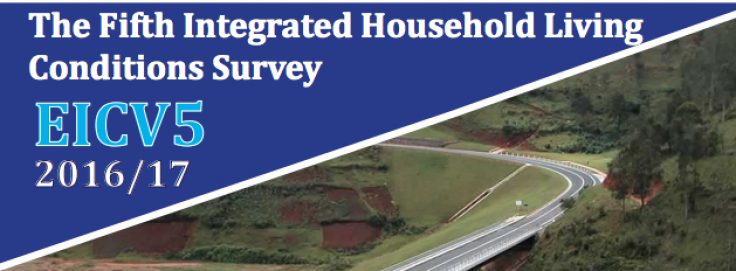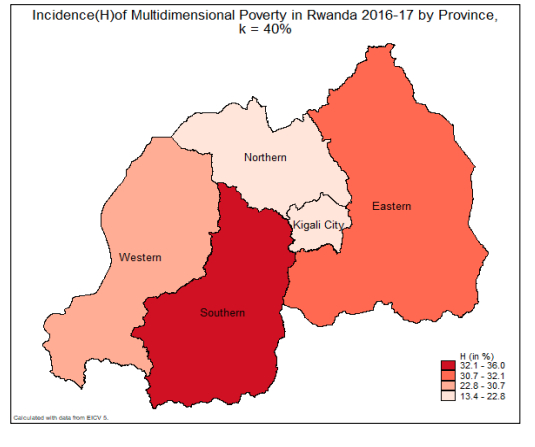
Search
Rwanda Releases First National MPI

On December 2018, Rwanda launched its first official National Multidimensional Poverty Index (RW-MPI) developed by the National Institute of Statistics for Rwanda (NISR) in collaboration with the Oxford Poverty and Human Development Initiative (OPHI). The new national index features four equally weighted dimensions – Education, Housing, Public Services and Social Services & Economic Activity – which correspond to a total of 14 indicators. The indicators comprising the four dimensions were selected to correspond to national action plans and public policy. The RW-MPI uses the Integrated Household Living Condition Survey (EICV) from 2010/11, 2013/14, and 2016/17.
The poverty cut off for the Rwandan national MPI is 40% meaning that those deprived in at least 2/5 of the indicators are considered multidimensionally poor. For 2016-17, this figure stands at 29% which is a 15 point reduction in the incidence of poverty compared to 2010/11, with a larger decrease in the generally more deprived rural areas.
The results show that regardless of their poverty status, 99.1% of the population in Rwanda is deprived in cooking fuel, closely followed by flooring material (72.4%) and drinking water (54.5%), while the lowest proportion of deprivation is found for school attendance (8.0%) and sanitation (12.8%).
After accounting for individual poverty status, cooking fuel and flooring remain to be the indicators with the highest share of deprivation among those classified as multidimensionally poor by the index. However, there have been significant improvements over the 2010/11-2016/17 period, with large decreases in the share of the poor being deprived in electricity, health insurance, bank account, sanitation and distance to healthcare facilities.
Intensity of deprivation changed little over the years, with the average person being deprived in just over 50% of the indicators. However, there are significant differences across regions and residences, with rural areas in the Southern part of the country being the most deprived while those residing in the capital city of Kigali are the least poor. The report notes that while there has been a reduction in the incidence of poverty over time, intensity has remained more or less the same, which indicates that those classified as multidimensionally poor continue to experience a high proportion of average deprivations.
The MPI denotes the share of poor individuals and the intensity of their deprivation by multiplying incidence (H) and intensity (A) of poverty. For Rwanda, this figure is 0.15 for the most recent survey year, with previous years having figures of 0.17 and 0.24.
Overall, the new RW-MPI provides a more complex picture of Rwandan society which can be used in addition or in contrasted to the figures for monetary poverty. Furthermore, it enables stakeholders to evaluate development programmes and inform public policy by an indicator level breakdown of the results or sub-group decomposition.
Full report is available here.

















